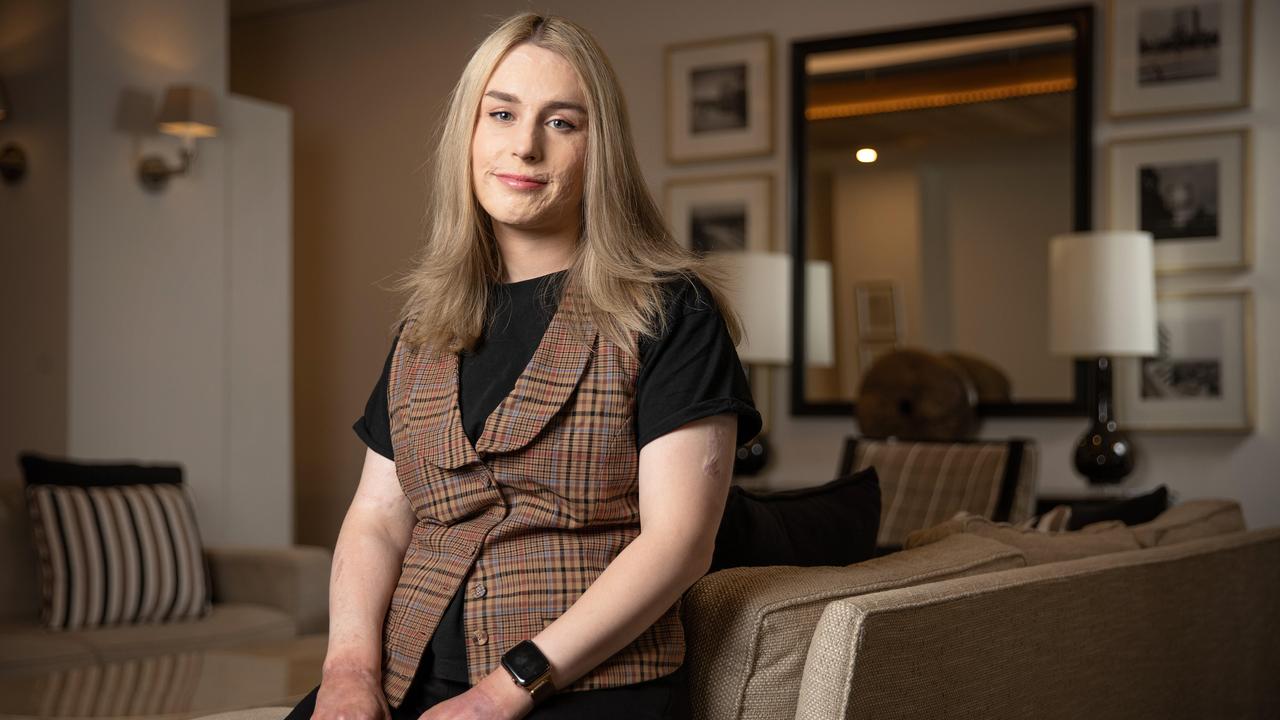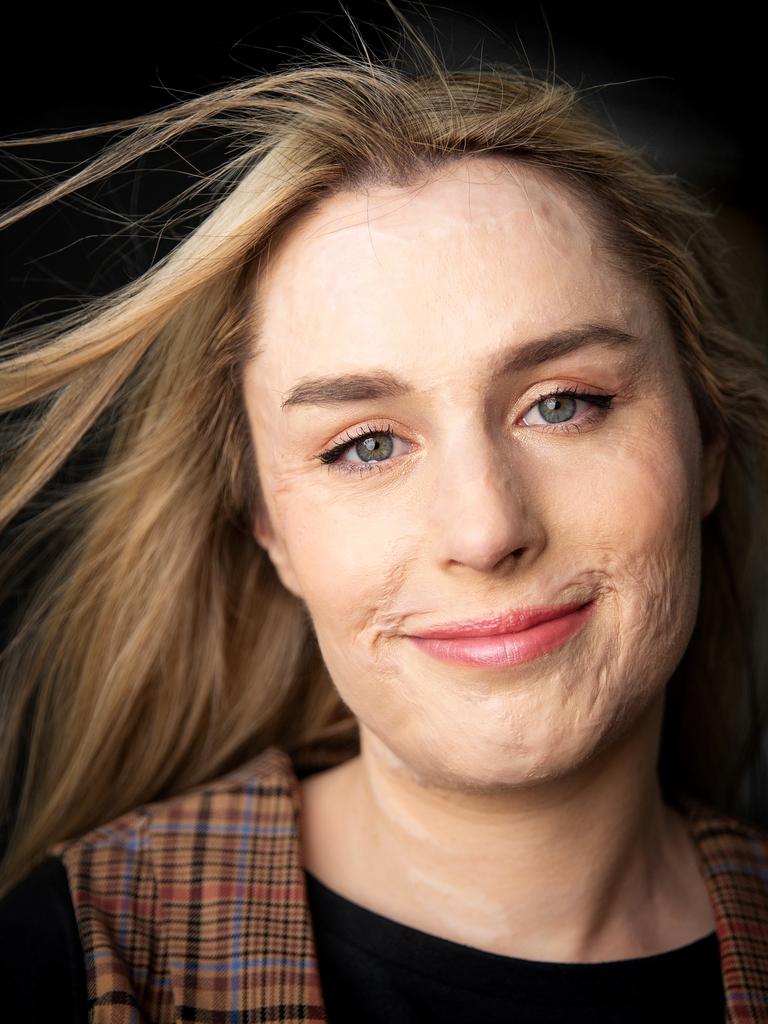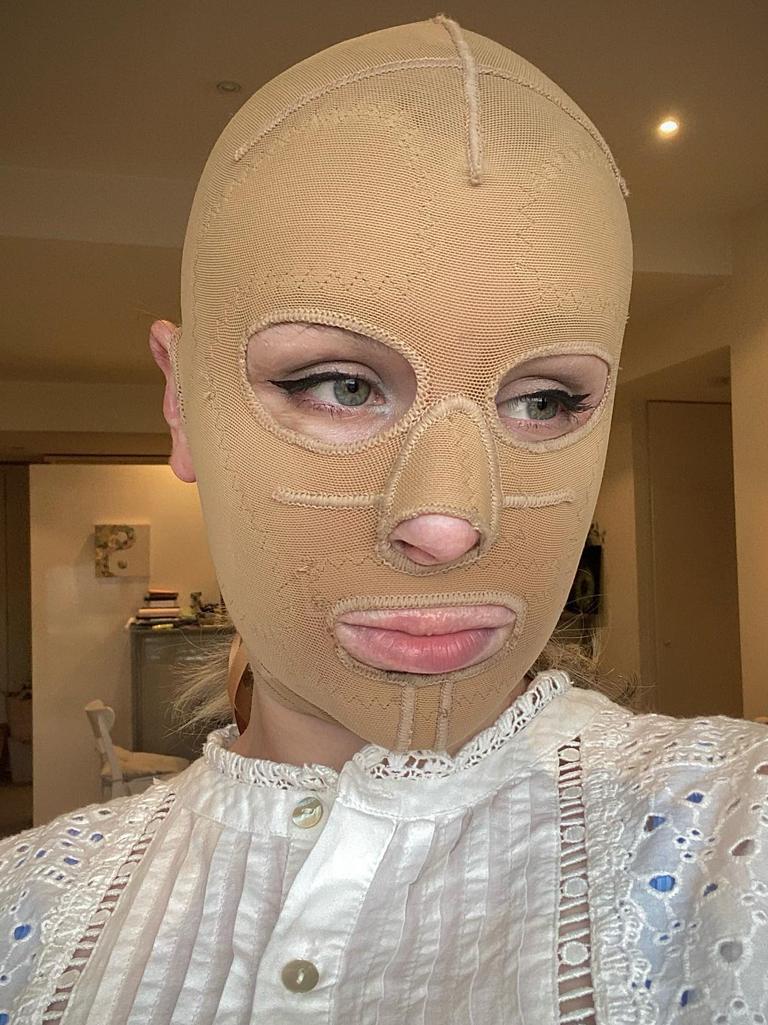‘I wouldn’t be here’: How skin transplants saved Stephanie Browitt
Skin had to be flown in from the US to help keep Stephanie Browitt alive. She’s now urging 13 million Aussies to help others like her with one simple act.

White Island volcano survivor Stephanie Browitt has urged all Australians aged 16-plus to become organ and tissue donors, after revealing “scary” shortages meant skin had to be brought in from the US to help keep her alive.
After suffering third-degree burns to 70 per cent of her body on the horror 2019 New Zealand trip that killed her father, Paul, and sister Krystal, Ms Browitt needed skin from at least 10 donors to act as “biological dressing”.
“There were dozens of other Australians injured in the eruption, so the hospitals ended up falling short on skin donation and had to order an extensive amount from the US,” she said.
“In Australia, we face multiple skin donation shortages when it comes to mass causality events like the Bali bombings, Black Saturday, on top of White Island.
“That’s scary – we’re a country that suffers from major bushfires nearly every year.”
DonateLife’s Great Registration Race added 60,000 people to the Australian Organ Donor Register across June, July and August – a result Organ and Tissue Authority chief executive Lucinda Barry said gave “hope to the 1750 patients currently on the organ transplant waitlist”.
Ms Browitt agreed the number was “encouraging”, given one organ donor could save up to seven lives and help many more through eye and tissue donation.
But with research showing four out of five Australians supported organ and tissue donation but only one in three were registered, Ms Browitt asked, “why shouldn’t we have an opt-out system?”
“A lot of people tell themselves they will sign up, but forget or procrastinate,” she said.
Australians are required to opt in to be considered for organ and tissue donation when they die, whereas countries like England, the Netherlands and Colombia have opt-out policies that presume consent unless a person indicates otherwise.
While it only takes one minute to register as a donor, 13 million Australians are yet to do so.


Ms Barry said despite the Great Registration Race boosting registration numbers and generating important family conversations about donation, there was “still so much more to do”.
“It never been easier to register – it takes less than a minute at donatelife.gov.au or just three taps in your Medicare app,” she said.
The 2022 tally was up 1 per cent on 2020, which was a record-breaking year for registrations before 2021 blew it out of the water with 108,000 opt ins. But 2021 is considered an anomaly, due to an unusually high volume of people accessing the Medicare app for Covid vaccination certificates.
Ms Browitt said she “wouldn’t be alive” without donated skin tissue. Her open wounds had to be covered with donated skin for several months, until a graft could be performed with her remaining healthy skin.
“Once they would take from a place where I had healthy skin, they had to wait for it to heal before they could take more,” she said.
She added she often thought of her donors and their families as “lifesaving angels”.
“I wouldn’t be here with my mum if it wasn’t for them,” she said.
Also in her and mum Marie’s thoughts each day are Paul and Krystal. “We love them, it’s hard not to have them by our side,” she said.
Since removing “painful and uncomfortable” compression bandages in June, Ms Browitt said she had “loved experimenting with make-up and my wardrobe”, getting back to socialising and feeling “the sun and breeze on my face”.
She hopes gaining access to Co2 laser treatment to make her scars “less red (and) hopefully flatten them over time”, allowing greater movement for her body, will be the next step in her remarkable recovery.
“I’ll always been a part of the Alfred Hospital burns unit, surgeries will be ongoing. But the plan now is to get back to life,” she said.
“I’m trying my best to make the most of my second chance.”

That has included becoming an advocate for burns victims and important causes like organ and tissue donation, using platforms like TikTok (where she has 1.7 million followers) and Instagram (124,000 followers).
“As I was recovering in hospital, it was very hard to speak to people – no one could really understand what I was going through,” she said.
“I found myself trying to seek out people online, or read stories of other people online who may have gone through having severe burns. There weren’t many – I knew of Turia Pitt, but I didn’t really know any others.
“That’s why I found it important to share my story and my recovery online, to be open and so raw, because I was looking for that to help me with my recovery.
“It amazes me people are looking up to me, trying to seek help from me. I try to respond to as many people (who message me) as I can.”



